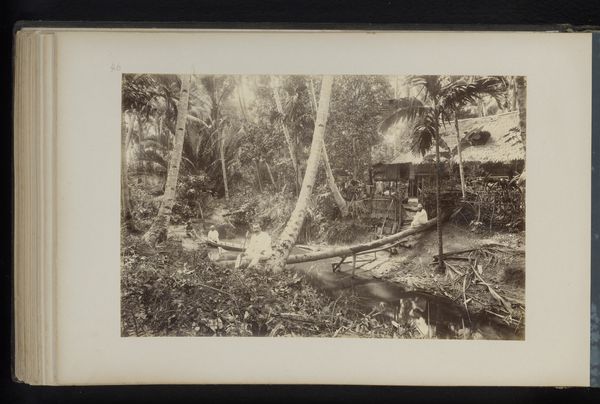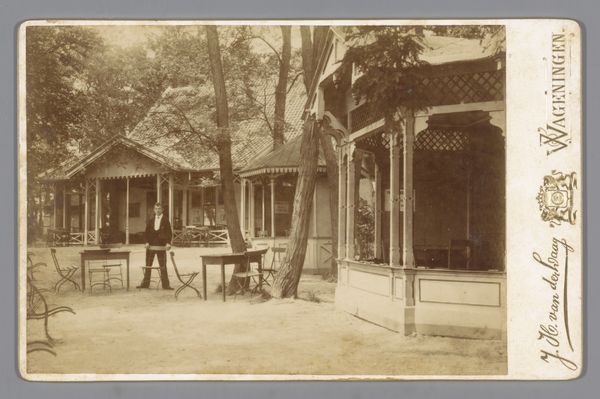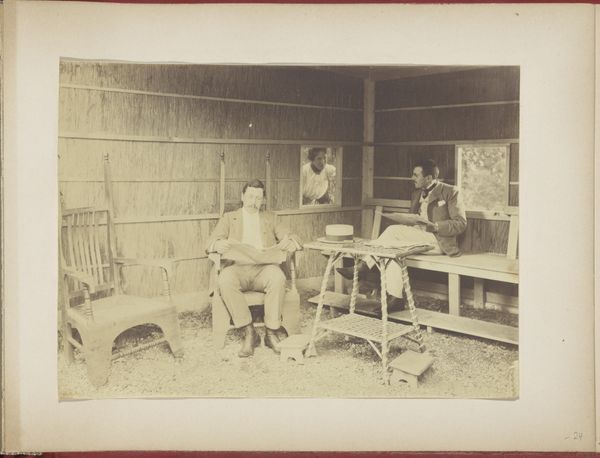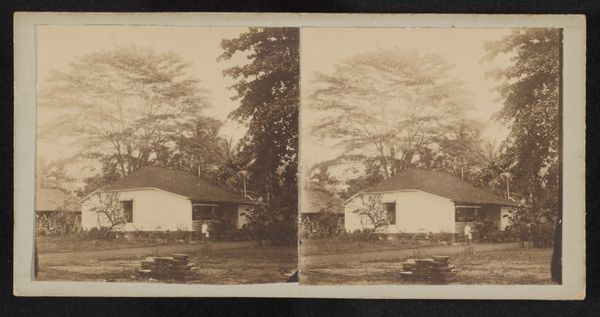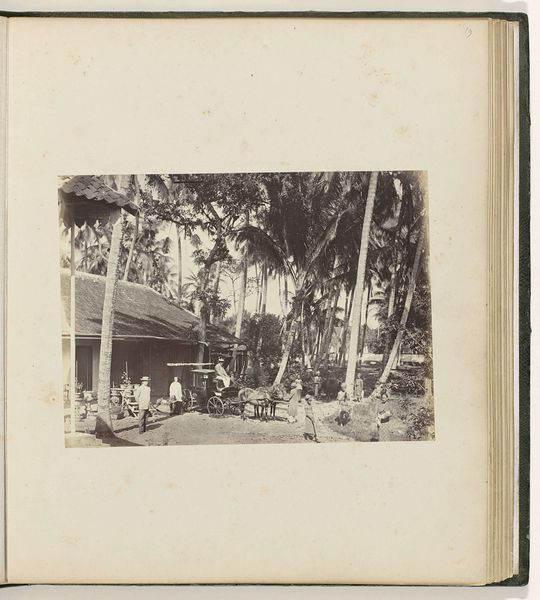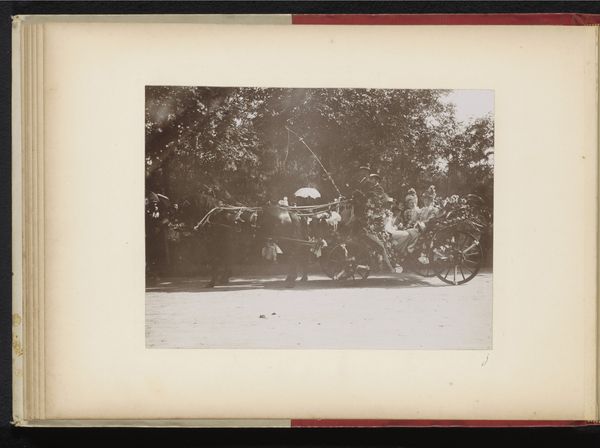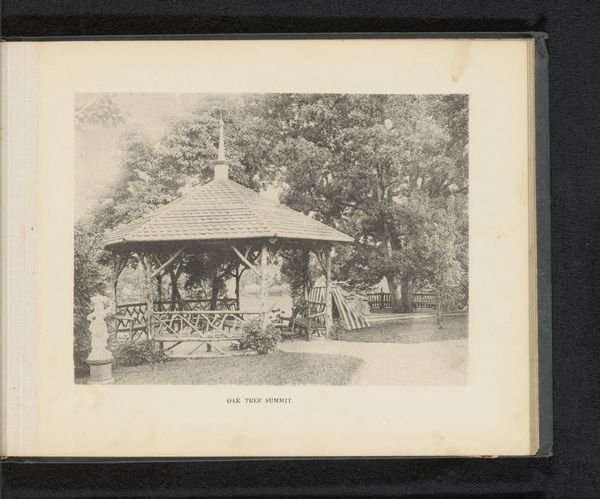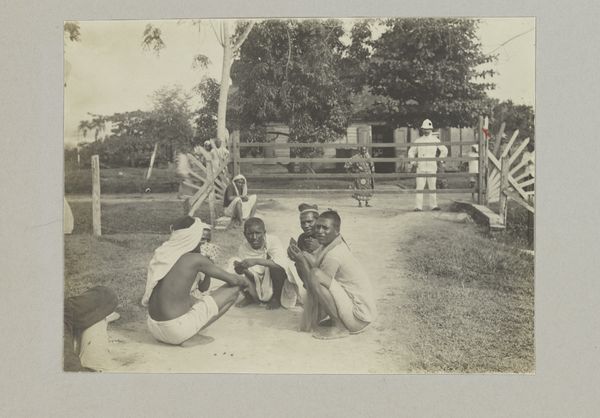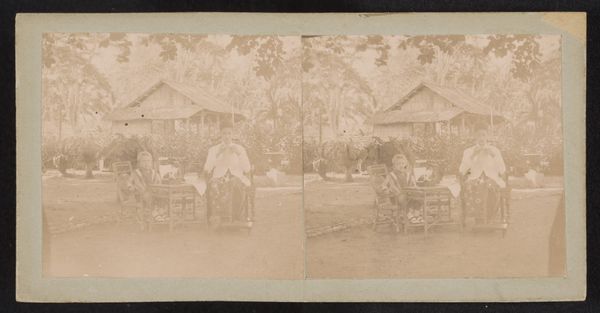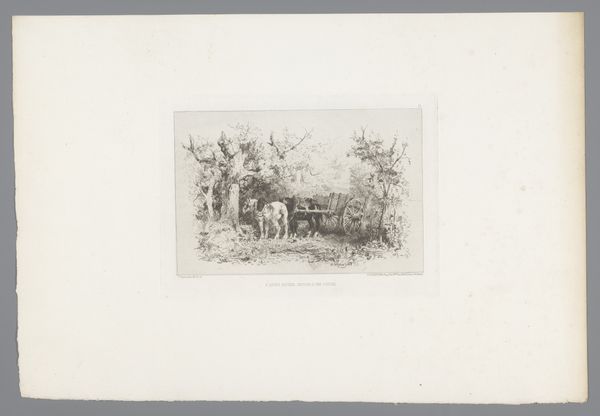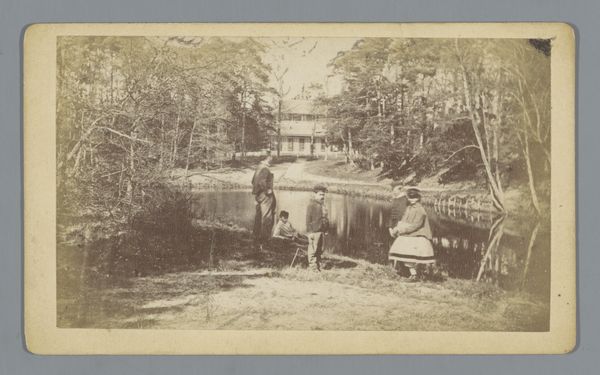
Gerard Aalbersberg en Hedwig en Jan Kleintjes lezen onder de veranda c. 1900 - 1906
0:00
0:00
photography
#
portrait
#
pictorialism
#
landscape
#
photography
Dimensions: height 120 mm, width 165 mm
Copyright: Rijks Museum: Open Domain
Editor: Here we have, "Gerard Aalbersberg en Hedwig en Jan Kleintjes lezen onder de veranda", a photograph by Gerardus Aalbersberg, dating around 1900 to 1906. There is something so intimate about this ordinary moment that he captures. It makes me wonder how leisure time and access to the outdoors were perceived and valued back then. What do you make of this photograph? Curator: I see a meticulously constructed tableau vivant designed to evoke a sense of bourgeois leisure. The composition, the staged poses of the figures reading – or pretending to read – under what appears to be a purpose-built veranda… all this points to a very deliberate construction of an image. We must ask, who was the audience for such a photograph? Editor: Well, I suppose their family and friends, but beyond that? Was photography becoming a tool for social climbing, maybe? Curator: Precisely. Consider the rise of pictorialism at this time. Photography aspired to the artistic status of painting, and this photograph reflects that ambition. The soft focus, the carefully arranged figures… they all contribute to a sense of aesthetic refinement. However, it's not just about art, but the democratization of art ownership due to photography is the crucial aspect here. Do you notice anything else striking? Editor: Now that you mention it, it does look heavily staged. Maybe I'm too cynical. Curator: Not at all. By examining the cultural context, we reveal how seemingly innocent images participate in broader societal narratives, like ideals around middle class comfort and cultivation. I wonder about access to outdoors; leisure was likely unavailable for certain groups in society. Editor: That’s a fantastic point! Looking closely at this scene, and factoring in those societal concerns, makes the photograph far more intriguing than I initially thought. Curator: And by thinking critically about the photograph as a staged production rather than a transparent record of reality, we gain a deeper understanding of its historical significance.
Comments
No comments
Be the first to comment and join the conversation on the ultimate creative platform.

